-
 Bitcoin
Bitcoin $117500
2.15% -
 Ethereum
Ethereum $3911
6.19% -
 XRP
XRP $3.316
10.79% -
 Tether USDt
Tether USDt $1.000
0.01% -
 BNB
BNB $787.2
2.24% -
 Solana
Solana $175.2
4.15% -
 USDC
USDC $0.9999
0.00% -
 Dogecoin
Dogecoin $0.2225
8.40% -
 TRON
TRON $0.3383
0.28% -
 Cardano
Cardano $0.7868
6.02% -
 Stellar
Stellar $0.4382
9.34% -
 Hyperliquid
Hyperliquid $40.92
7.56% -
 Sui
Sui $3.764
7.63% -
 Chainlink
Chainlink $18.48
10.66% -
 Bitcoin Cash
Bitcoin Cash $582.1
1.88% -
 Hedera
Hedera $0.2601
6.30% -
 Avalanche
Avalanche $23.33
4.94% -
 Ethena USDe
Ethena USDe $1.001
0.02% -
 Litecoin
Litecoin $122.3
2.04% -
 UNUS SED LEO
UNUS SED LEO $8.969
-0.27% -
 Toncoin
Toncoin $3.339
0.86% -
 Shiba Inu
Shiba Inu $0.00001287
4.30% -
 Uniswap
Uniswap $10.43
7.38% -
 Polkadot
Polkadot $3.861
5.08% -
 Dai
Dai $1.000
0.02% -
 Bitget Token
Bitget Token $4.513
3.41% -
 Monero
Monero $267.7
-6.18% -
 Cronos
Cronos $0.1499
4.14% -
 Pepe
Pepe $0.00001110
5.15% -
 Aave
Aave $284.9
8.28%
How are funding rates calculated and what do they signify?
Funding rates in crypto perpetual contracts align prices with spot markets by transferring payments between longs and shorts every 8 hours based on price divergence.
Aug 08, 2025 at 09:28 am
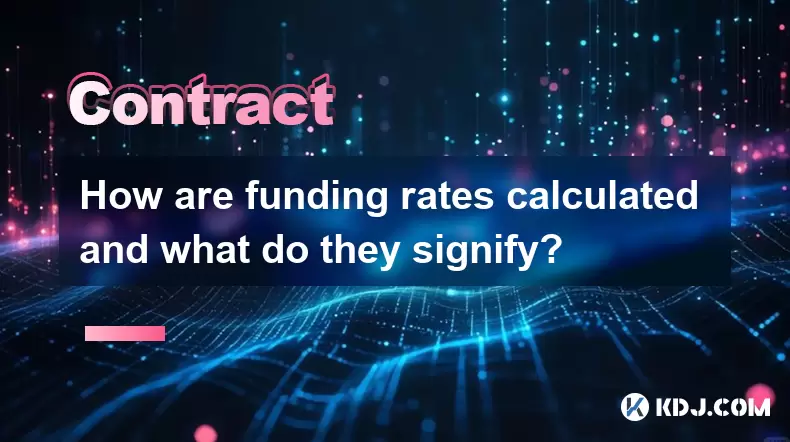
Understanding Funding Rates in Cryptocurrency Derivatives
Funding rates are a critical mechanism in perpetual futures contracts within the cryptocurrency derivatives market. Unlike traditional futures, perpetual contracts do not have an expiration date, which means they rely on a periodic payment system—known as the funding rate—to keep the contract price aligned with the underlying spot price of the asset. This alignment prevents the perpetual contract from deviating significantly from the actual market value of the cryptocurrency. The funding rate acts as a balancing tool between long and short positions, ensuring market efficiency.
Components of Funding Rate Calculation
The funding rate is composed of two main elements: the interest rate component and the premium component. The interest rate portion reflects the cost of capital difference between holding the cryptocurrency versus a stablecoin or fiat. However, in most crypto exchanges, this component is often minimal or set to zero, assuming the base interest rate is negligible.
The premium component is more influential and adjusts dynamically based on the difference between the perpetual contract price and the spot index price. If the contract trades at a premium (higher than spot), longs pay shorts. If it trades at a discount (lower than spot), shorts pay longs. This premium is calculated using a formula that often includes the Index Price, the Mark Price, and a clamp mechanism to prevent excessive rates.
For example:
- Index Price: An average of spot prices from major exchanges.
- Mark Price: A fair price estimate that includes funding to prevent manipulation.
- Premium Index: Measures the deviation of the contract price from the index.
The exchange aggregates these inputs to determine the funding rate every funding interval, typically every 8 hours.
Step-by-Step Calculation of Funding Rate
To understand how exchanges compute funding rates, consider the following process used by major platforms like Binance or Bybit:
- Retrieve the Index Price of the cryptocurrency from a basket of spot markets.
- Determine the Mark Price, which is usually a combination of the latest traded price and a funding buffer.
- Calculate the Premium, which is the difference between the Mark Price and the Index Price, divided by the Index Price.
- Apply a clamping mechanism to limit the maximum funding rate (e.g., ±0.75% per 8 hours).
- Add the interest rate component, which is typically 0.01% annualized, making its periodic contribution negligible.
- Combine the premium and interest components to get the final funding rate.
The funding rate is then applied to open positions at regular intervals. For instance, if the calculated rate is 0.01%, traders with open positions will either pay or receive 0.01% of their position value, depending on whether they are long or short.
Significance of Positive and Negative Funding Rates
A positive funding rate indicates that long positions are paying shorts. This typically occurs when there is strong bullish sentiment, driving the perpetual contract price above the spot price. Traders are willing to pay a premium to maintain long leverage, signaling market optimism.
Conversely, a negative funding rate means shorts are paying longs. This happens when the perpetual price trades below the spot price, often reflecting bearish sentiment or increased short positioning. It can suggest that traders expect the price to decline and are hedging or speculating accordingly.
Traders monitor funding rates to gauge market sentiment. Extremely high positive rates may warn of over-leveraged long positions, increasing the risk of a liquidation cascade. Similarly, persistently negative rates may indicate oversold conditions or fear in the market.
Impact on Trading Strategies and Position Management
Funding rates directly influence carry costs for leveraged positions. A trader holding a long position in a market with consistently high positive funding rates will incur recurring costs, reducing profitability even if the price moves favorably. Conversely, a short position in such an environment earns funding payments, offsetting some risk.
Sophisticated traders use funding rate data to:
- Identify funding arbitrage opportunities by going long on exchanges with lower funding rates and shorting on those with higher rates.
- Adjust position size or direction when funding becomes excessively positive or negative.
- Time entries and exits based on funding extremes, treating them as contrarian indicators.
Exchanges automatically deduct or credit funding payments from or to traders’ wallets at the top of each funding interval. This process is transparent and visible in the account’s transaction history. Traders must account for these payments when calculating net returns, especially in low-volatility environments where funding can outweigh price movement gains.
Monitoring and Accessing Funding Rate Data
Most cryptocurrency derivatives exchanges display real-time funding rates on their trading interfaces. To access this data:
- Navigate to the specific perpetual contract (e.g., BTC/USDT).
- Locate the funding rate section, usually near the order book or price chart.
- View the next estimated funding time and rate.
- Check historical funding rates, often available in a separate tab or API endpoint.
Traders can also use third-party analytics platforms like Coinglass or Hyblock to compare funding rates across multiple exchanges. These platforms provide visualizations of rate trends, helping identify anomalies or shifts in market structure.
API access allows automated systems to retrieve funding data:
- Use the exchange’s REST API to call the
/funding_rateendpoint. - Parse the JSON response for the current rate and next funding time.
- Integrate this into trading bots to adjust strategy based on funding conditions.
Frequently Asked Questions
What happens if I close my position before the funding payment?
If you close your position before the funding timestamp, you will not be charged or credited the funding rate for that cycle. Funding is only applied to positions open at the exact moment of the funding interval.
Can funding rates be manipulated by large traders?
While individual traders can influence short-term price deviations, most exchanges use a Mark Price based on external indices to calculate funding, reducing the risk of manipulation. The premium component is derived from this fair price, not the last traded price.
Why do some stablecoin-based pairs have near-zero funding rates?
Stablecoin pairs like BTC/USDT often have low funding rates when the perpetual price closely tracks the spot price. Without significant premium or discount, and with negligible interest components, the resulting funding rate remains close to zero.
Do all perpetual contracts have funding rates?
Yes, all perpetual futures contracts use funding rates to anchor their price to the underlying spot market. This mechanism is intrinsic to the design of perpetual swaps, regardless of the asset or exchange.
Disclaimer:info@kdj.com
The information provided is not trading advice. kdj.com does not assume any responsibility for any investments made based on the information provided in this article. Cryptocurrencies are highly volatile and it is highly recommended that you invest with caution after thorough research!
If you believe that the content used on this website infringes your copyright, please contact us immediately (info@kdj.com) and we will delete it promptly.
- Bitcoin, Meme ICOs, and FOMO: Catching the Next Crypto Wave
- 2025-08-08 18:30:34
- OM, Investment, and Growth: Decoding the Latest Trends in Digital Assets
- 2025-08-08 18:30:34
- SNEK, Cardano, and the Contributor's Conundrum: A Meme Coin's Fight for Recognition
- 2025-08-08 16:30:12
- Toshi Crypto's Wild Ride: Rally, Demand Slump, and What's Next
- 2025-08-08 16:30:12
- Ethereum, Staking Yields, and DeFi Exposure: A New Era for Investors?
- 2025-08-08 15:10:12
- Unilabs Pumps MIA, Binance Coin Bouncing Back, and Ethereum's Bearish Blues
- 2025-08-08 15:10:12
Related knowledge

What is the distinction between mark price and last price on KuCoin?
Aug 08,2025 at 01:58pm
Understanding the Basics of Price in Cryptocurrency TradingIn cryptocurrency exchanges like KuCoin, two key price indicators frequently appear on trad...

What are the specific maker and taker fees on KuCoin Futures?
Aug 08,2025 at 08:28am
Understanding Maker and Taker Fees on KuCoin FuturesWhen trading on KuCoin Futures, users encounter two primary types of fees: maker fees and taker fe...
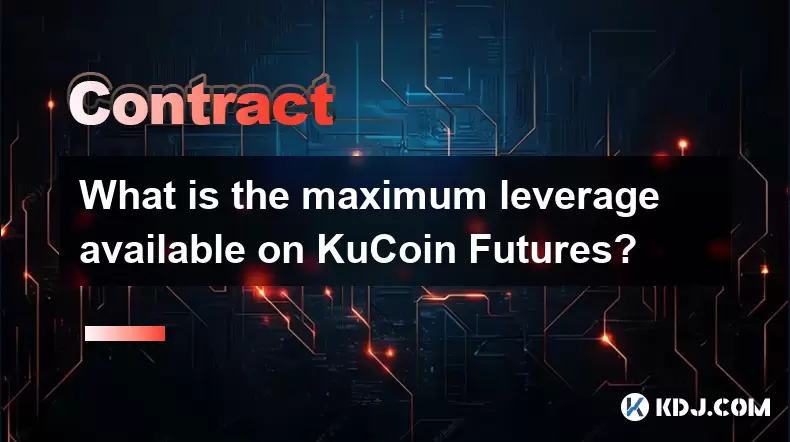
What is the maximum leverage available on KuCoin Futures?
Aug 08,2025 at 10:21am
Understanding Leverage in KuCoin Futures TradingLeverage in KuCoin Futures allows traders to control a larger position size using a smaller amount of ...
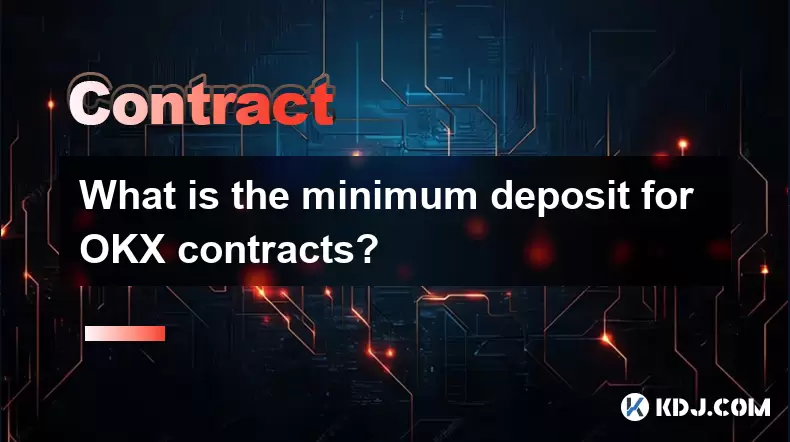
What is the minimum deposit for OKX contracts?
Aug 08,2025 at 07:00am
Understanding OKX Contract Trading BasicsOKX is one of the leading cryptocurrency derivatives exchanges, offering a wide range of perpetual and future...
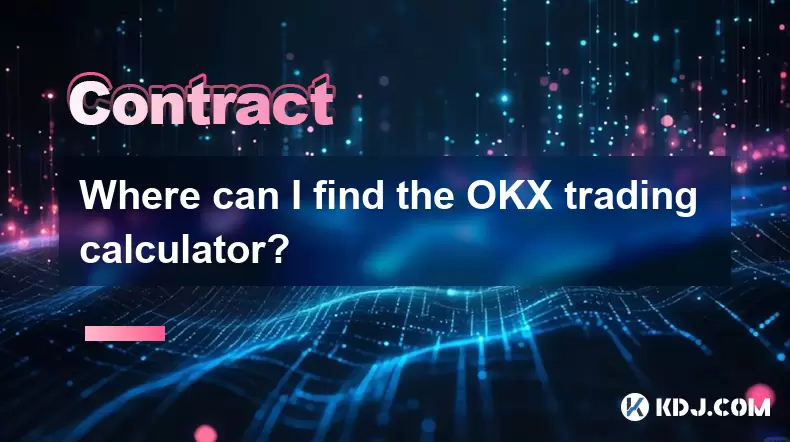
Where can I find the OKX trading calculator?
Aug 08,2025 at 07:49am
Understanding the OKX Trading Calculator FunctionalityThe OKX trading calculator is a powerful analytical tool designed to assist traders in estimatin...
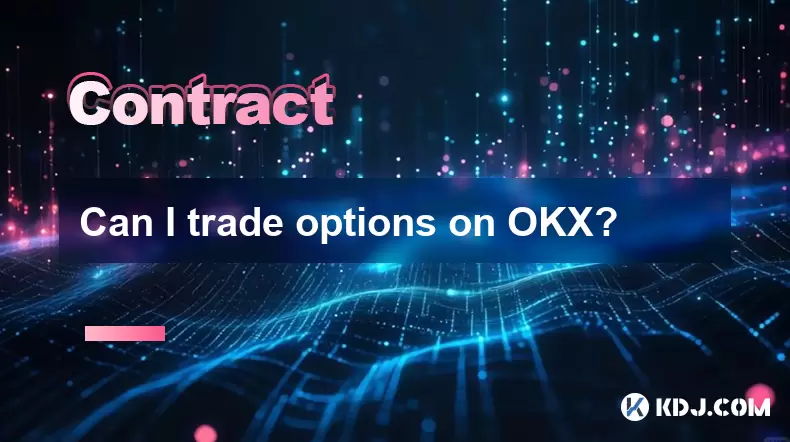
Can I trade options on OKX?
Aug 08,2025 at 11:01am
Understanding Options Trading on OKXYes, you can trade options on OKX. OKX is one of the leading cryptocurrency derivatives exchanges that offers a de...

What is the distinction between mark price and last price on KuCoin?
Aug 08,2025 at 01:58pm
Understanding the Basics of Price in Cryptocurrency TradingIn cryptocurrency exchanges like KuCoin, two key price indicators frequently appear on trad...

What are the specific maker and taker fees on KuCoin Futures?
Aug 08,2025 at 08:28am
Understanding Maker and Taker Fees on KuCoin FuturesWhen trading on KuCoin Futures, users encounter two primary types of fees: maker fees and taker fe...

What is the maximum leverage available on KuCoin Futures?
Aug 08,2025 at 10:21am
Understanding Leverage in KuCoin Futures TradingLeverage in KuCoin Futures allows traders to control a larger position size using a smaller amount of ...

What is the minimum deposit for OKX contracts?
Aug 08,2025 at 07:00am
Understanding OKX Contract Trading BasicsOKX is one of the leading cryptocurrency derivatives exchanges, offering a wide range of perpetual and future...

Where can I find the OKX trading calculator?
Aug 08,2025 at 07:49am
Understanding the OKX Trading Calculator FunctionalityThe OKX trading calculator is a powerful analytical tool designed to assist traders in estimatin...

Can I trade options on OKX?
Aug 08,2025 at 11:01am
Understanding Options Trading on OKXYes, you can trade options on OKX. OKX is one of the leading cryptocurrency derivatives exchanges that offers a de...
See all articles

























































































